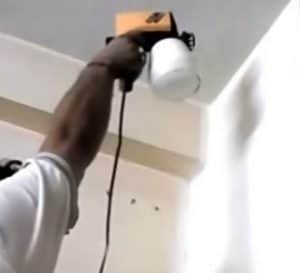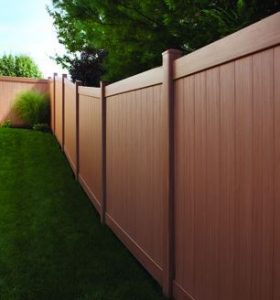As a painter for over 20 years one of the main problems that I have sometimes is thinking that everyone knows and understands how to use a paint sprayer correctly.
Much like swinging a golf club, drilling a nail or any other skill that requires hand & eye coordination there are right and wrong ways to use a paint sprayer. Because paint sprayers are different it is important to understand what type of sprayer that you have and then tailor your paint spraying to what you are painting.
As a teacher and coach I like to use sports analogies to explain the proper spraying technique. While everyone should master a basic golf or baseball swing, it is important to adjust these for certain situations. This is the same for developing a paint stroke as you will use a traditional stroke 80% of the time, but there will be some occasions where you need a different stroke depending on what you are painting and what type of paint gun you are using. Let’s take a look.
What Type of Paint Sprayer
There are different types of sprayers that are used for different jobs. Most traditional sprayers that you buy at a local hardware store or online will usually are HVLP (High Volume Low Pressure) or air sprayer. If you someone that may be a contractor or is doing a large job, you might use an airless sprayer. Each of these spray guns is slightly different.
Reading the Instructions
Like any other tool you purchase each way of putting together a paint sprayer will be slightly different. It is important to read all the instructions when putting together your paint sprayer because missing a little part can cause big problems. I advise to save your instructions in a safe place, as many paint sprayers will have a part about common paint sprayer issues and a phone number or a way to fix them.
Basic Paint Sprayer Mechanics
To develop your paint sprayer mechanics it is wise to practice on cardboard, wood or something else. Those who are new to using a paint

Proper mechanics are 10-12″ from the spray target while keeping a smooth stroke
spray gun will often just point at a wall and spray side to side. Many times when they are spraying they pay little attention to the distance they are away from their target and their motion. Below is a breakdown of the best way to use a paint sprayer.
- Start 10-12” away from your target area with your paint sprayer.
- Keep your arm steady and your nozzle perpendicular to your target
- Spray in a smooth steady motion, much like you would with a paint brush
- Divide your intended spraying area into several rectangles or squares
- Spray the edges first and then fill in the middle
- Overlap rows to avoid any missed area
- When painting ceilings make sure to avoid any drippage in your eyes
Using these painting mechanics will not only make your painting go more smoothly, but it will help cut down on some common painting injuries that occur to improper form.
Paint Spraying Different Areas
The following mechanics above work on about 80% of the areas that you plan on painting. Because we recommend a square method, it is easy to break up your area in sections. There are circumstances where you may have to adjust your spraying method; a few of these are below.
Painting on a ladder– When painting on a ladder you cannot cover as much ground as you can when on the ground, while you should keep the motion the same, you will want to cut down your area that you paint. When painting a high ceiling, you will want to consider safety as your first priority over technique.
Painting on a roof– When you are on a roof it is always wise to error on the side of caution. We suggest spraying the middle first and then working your way out to the edges. If you are not on a ladder, it is wise to use a harness or something else secure and to watch for your safety first.
Painting a floor– The square method of painting does not work on a floor due to the fact that you don’t want to walk in your painted area. When painting a floor you will want to paint in rows as if you were mowing the grass. Make sure to use the 10-12” distance and walk at a slow and steady pace.
Painting Indoors vs. Outdoors– When painting indoors vs. outdoors there are a few variables to look at for optimal painting, let’s take a look below.
How to Use a Paint Sprayer Indoors
There are few things to look at when you are choosing on whether to paint indoors or outdoors. While your paint stroke should remain the same, if you want to use a paint sprayer in optimal conditions, follow the guidelines below
- The optimal painting temperature indoors is between 60-80 degrees, adjust your thermostat to try and get into this range if you are not already.
- Using fans and opening windows will aid in the dry time for your paint.
- It is often best to paint at night and use a lamp or light, this will avoid missing any spots.
- Read your primer and paint for optimal drying times in figuring out how long it will take you to paint.
How to Use a Paint Sprayer Outdoors
When paint spraying outdoors it is wide to check weather conditions before moving forward as these can ruin a paint job in no time. Let’s take a look further into what we are looking for when painting outdoors.
- Check weather.com before planning your painting

Always try to paint on calm and sunny days if possible
- Avoid days with precipitation, high winds or excessive temperatures
- Optimal painting conditions outside are between 55-85 degrees
- If painting in the summer it is wise to paint early morning or early evening to avoid excess temperatures
- Avoid painting on windy days as this will cause overspray
- Must use a quality paint sprayer and avoid any low end models.
- Rain can ruin a painting project in no time
- Paint a fence in sections and avoid overspraying as this project takes up a lot of paint.
Using a Paint Sprayer on Other Household items
When using a paint sprayer on other items it is wise to develop a plan depending on your object. The traditional square spraying method will not work and it is wise to adjust to your project. While each object is different, using the same basic paint spraying mechanics will work. Remember when you turn corners do so with a consistent spraying stroke.
Using a Paint Sprayer on Furniture
Now more than ever people have been making a living by finding furniture and fixing it up for resale. Yard sales, flea markets, www.craigslist.com and Goodwill stores are just a few places that you can find a piece of furniture to resell. One common method that people are using is a very simple process of fixing, sanding and painting furniture to resell. Let’s take a look on how to use your sprayer on furniture the right way.
- Paint outdoors or in a garage if possible with furniture to avoid overspray
- Use the same 10-12” distance as you move around the furniture
- Always sand wooden furniture before using a paint sprayer
- When paint spraying iron furniture make sure to let it completely dry before adding another coat
How to Use a Paint Sprayer on Cabinets
When using a paint sprayer on kitchen cabinets, the optimal conditions would be spraying the cabinets on the ground and then installing them. Unfortunately, this is an advanced skill and is not advised for those who don’t have experience with removing and installing kitchen cabinets. With that being said the dimensions of cabinets make you use a different strategy. Follow these guidelines below
- Remove cabinets if possible, but always remove the doors of the cabinet
- Create a “painting booth” in your garage or outside when painting kitchen cabinet doors
- Let kitchen cabinet doors dry overnight before installing them back onto the cabinets
- When spraying inside a cabinet, continue to use a consistent stroke
- Have a roller and brush to get hard to reach places or places where your sprayer may not fit
Painting Your Bathroom
When you are painting any kind of ceramics be careful to tape off areas that you will not paint. Paint is very hard to remove from in between tiles once it has dried.
Painting Over Wallpaper
Painting over wallpaper can be very tricky depending on how old the wallpaper is and what colors it may be. Check out this post to see the best way to paint wallpaper.
Conclusion
Using a paint sprayer the right way can be somewhat confusing for those who have never done so. Like any tool that you don’t have experience in, it is wise to practice before you use it on something that you will paint permanently. The best advice is to stay 10-12” away from your target and use a smooth stroke much as if you were painting with a brush. And the last piece of advice is thoroughly read through your paint sprayer instruction manual before moving forward with any painting project.